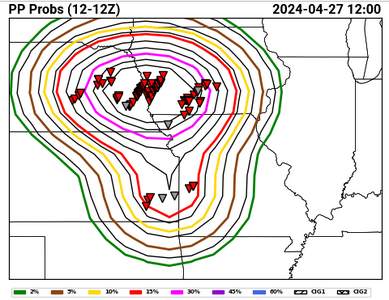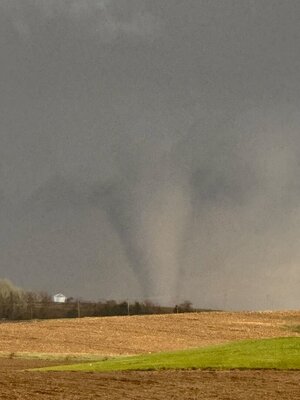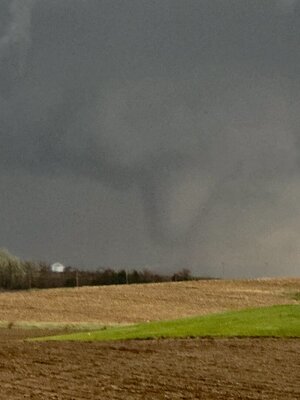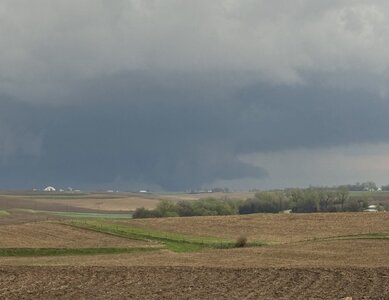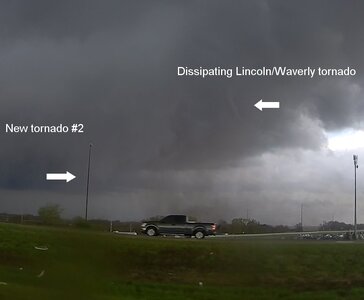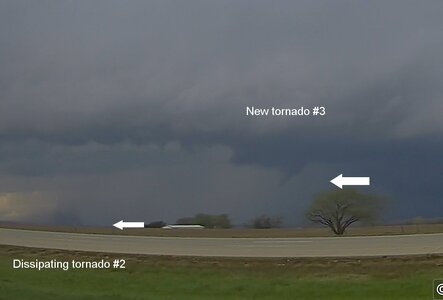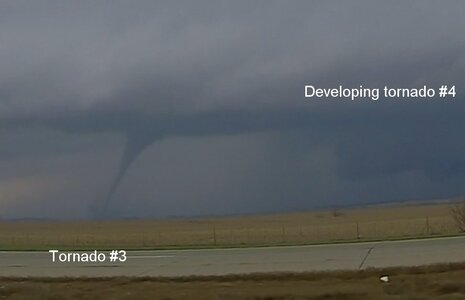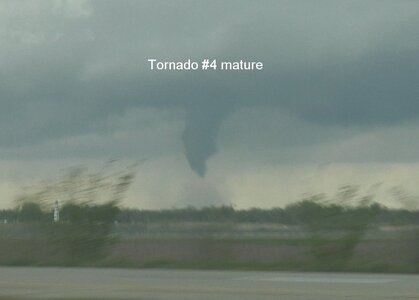We were talking about this at supper. Reading their forecast makes you feel like they would rather underforecast than be accused of blowing the forecast or hyping the weather.
Wichita forecasters have been interesting to read. One would hype Saturday, and then the next would list all the reasons why it might not happen in the next forecast.
There is well-known psychological bias at work here. Everyone was talking about how this past Saturday was going to be the "big day."
It was big, but Friday overshadowed it. So the linear mindset and thought process that humans have, the simple extrapolated logic is often "X day was much worse than forecast, so the next day (Y) has been forecast to be big, so that means that Y day should be even bigger!"
Of course, that's *not* how the wx, atmosphere, and climate work. It is far from linear and the details count. We are dealing with two logical fallacies, "correlation = causation" and "recency bias," and these two are among the most common fallacies out there!
The scale/enormity and shock/awe of a single big event puts many in a heightened state of awareness and worry, so any mention of
further high-impact wx potential, esp. soon after the big event, it sets people off b/c the shock and awe of the first event is still fresh in their mind (the recency bias). So people tend to overreact and worry a lot more in the short-term, and this leads to bigger media hype and bad/misinformation becomes more prevalent, and often get outs of control with bad/misinformation rife.
Now there is *some* truth here, as in "similar wx patterns often breed similar individual sensible wx events." So when a pattern exists that is favorable for high-end events of a particular type, you will sometimes see it become absolutely relentless and incredible.
I always say, "when it is favorable, it can be *really* favorable!" Examples?
April 2011
We all know the Superoutbreak at the end of the month, but there were several other significant/big outbreaks that
month that led to an incredible 758 tornadoes for the U.S. that month, by *far* the most tornadoes in any month on record.
The Superoutbreak total I think was about 225 tornadoes. So take that number out of the 758, you still have 533 tornadoes,
which in itself would be close, if not #1, for a record for U.S. tornado monthly count! So you see how "favorable" it was large-scale
for the month.
Winter 2022-23
The West was pummeled with repeated ARs all season, leading to all-time record rainfalls and snowfalls for a winter season at many locations.
2004 Hurricane Season
FL was hammered repeatedly by significant/major hurricane landfalls in a relatively short period of time.
2005 Hurricane Season
It was virtually non-stop across the entire Atlantic Basin, and many records broken. We saw things occur seasonal and with individual TCs we thought were not possible or never had seen before.
But as we have all seen, the mesoscale is tricky, and we still have severe limits as to our forecast skill, even when it is the day of such an event! From empirical observations, it appears there is a fine-line between minor and major tornado outbreaks. One thing off, say LFC is a bit too high, shear profile weaker at one layer, storm initial mode, overnight MCS wipes out the low-levels, the list is long, can make or break a major tornado event!
How many times have we seen it looks unreal or excellent digitally (or on paper) for various model forecasts, only to be scratching our heads as to the event underperforming? That proves our limits, and thus shows you can't simply extrapolate one day to the next when it comes to tornado outbreak potential. Of course, sometimes it works the other way, it does not look at impressive at all, and the event overperforms!
Don't get me wrong, we are getting better with mesoscale and tornado forecasting, but still have a long way to go.
This is what drives us to improve and do better, which is a great thing!
